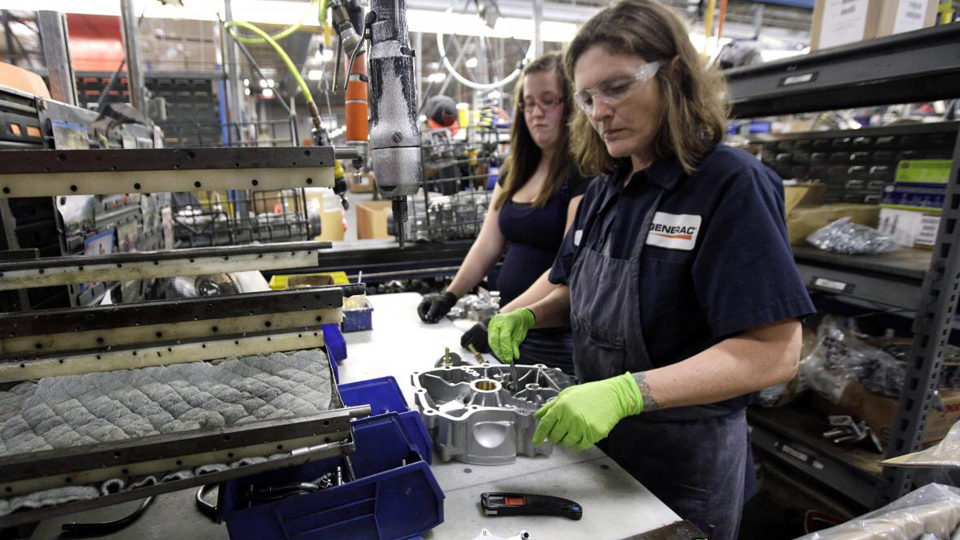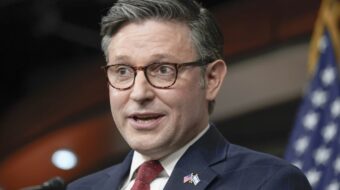
It should be easy to run against Trump’s rural America record. Aside from his made-for-Fox-News rallies, he has little to brag about in rural policy except for self-inflicted wounds that risk returning rural America back to the farm crisis of the 1980s.
Trump’s misguided tariff wars and scuttling of NAFTA have exacerbated crop prices that were already slumping, especially corn, soybeans, and wheat. This year, farm loan delinquencies have hit a nine-year high. Since land is the basis for farm loans, another disturbing trend is the fifth straight year of decline in Midwestern farmland values, according to the Federal Reserve Bank of Chicago, which represents the region of Illinois, Indiana, Iowa, Michigan and Wisconsin, all states (except for Illinois) that Trump won in 2016. According to the Chicago Fed, this is “the longest downturn since the 1980s” in farmland valuations. And although unemployment is low in the Midwest, it masks the long-term disinvestment and depopulation of rural locations in the region.
Democrats should have learned from 2016 that ignoring rural Midwestern states, or assuming their support, is a proven bad approach. As Pulitzer Prize-winning editorial writer Art Cullen of Iowa’s Storm Lake Times recently noted, “The main problem with Democrats is not showing up in flyover country, and they paid for it with the election of Donald Trump.”
A huge group of Democrats is already showing up in Iowa to compete for the nation’s first caucus next February. On March 29, five of those Democratic presidential hopefuls appeared in Storm Lake for the Heartland Presidential Forum to address their vision for rural America. Julián Castro of Texas, John Delaney of Maryland, Amy Klobuchar of Minnesota, Elizabeth Warren of Massachusetts, and Tim Ryan of Ohio took questions from Cullen, two reporters from HuffPost, and audience members at the more than two-hour event. Of course, showing up is just part of being a candidate. The bigger test is what ideas they have for rural America, including Iowa, which turned to Trump in 2016.
All of the politicians were adept enough to endorse rapid federal aid to the region’s communities ravaged by flooding rivers this spring. They all also suggested some long-term policies to confront the economic malaise of rural areas. Both Warren and Klobuchar proposed confronting big agribusiness: “A generation ago, 37 cents out of every food dollar went into a farmer’s pocket,” Warren said. “Today, it’s 15 cents. And one of the principal reasons for that has been concentration in agribusiness…. I want to see the enforcement of our antitrust laws.” Klobuchar hit a similar note about the handful of multinational corporations that control agribusiness. “I think we are now entering what is essentially a new gilded age, and we need to take on the power of these monopolies,” she said.
Delaney, who was the first to announce his run (in July 2017!) and whose commercials have been staples of Iowa television, introduced his “Heartland New Deal,” with proposals for health care, infrastructure (including the popular idea of broadband for rural areas), agriculture policy reform, and especially investments. “I believe in the power of investment,” said Delaney, who made his fortune running investment companies and offered the least imaginative vision.
Castro, like all of the speakers, advocated for local schools and community health care, but most strongly emphasized his support of immigration, which brings badly needed workers to agriculture and slumping rural towns. “We can have a secure border and also be compassionate and recognize the value of our immigrant community.” Castro’s comment was followed by substantial applause from an audience right in the middle of Republican U.S. Rep. Steve King’s district, demonstrating that rural voters aren’t monolithic in support of anti-immigrant politicians like King and Trump.
Ryan, who hails from Youngstown, Ohio, tried to make the urban-rural connection. “How do we get these manufacturing centers and some of these urban centers [that] have been hollowed out in the last 30 or 40 years, tied together politically with rural American? Same issues—hospitals closing down, children leaving—kids leaving our communities, opiate epidemic, failure to be able to fund our local public services, our local schools,” he said.
Ryan has a point. Some of the answers to the question, “What does it take to enable rural America to survive?” also apply to those hollowed-out industrial centers. Yet all of the candidates at the conference ignored three important issues where federal policy can make a significant difference in both places.
First, an often overlooked component to small-town health is a post office. In a digital economy, package delivery is essential. Having a local post office literally puts a town on the map. One post office advocacy group counted nearly 1600 post offices closed from 2008 to 2017, estimating that three-quarters of those padlocked locations are rural. But blighted urban neighborhoods have lost post offices, too.
Aside from deliveries, post offices can offer another function to help working-class towns and urban neighborhoods flourish. Sen. Kirsten Gillibrand of New York (who missed an opportunity in her absence from the Heartland Forum) has introduced legislation to require U.S. Postal Service offices to offer basic financial services to customers, an idea supported by both Elizabeth Warren and Bernie Sanders. This would expand financial services into rural towns that may have none, providing services like free checking accounts and debit cards to those who cannot afford the fees of commercial banks. Most important for working people is the proposal that postal banks could make small loans of up to $500 at low-interest rates, undercutting the exploitative payday lender business and helping the 11 percent of adults who have had to resort to payday loans. This system works in 87 other countries, including Great Britain, France, Switzerland, Canada, Australia, Japan, and Singapore. The idea may sound un-American to some, but it’s worth remembering that the U.S. had its own post office banking system 1911 to 1966.
Second, the federal government can also help sustain small-town schools, another essential institution for rural towns in Iowa and urban neighborhoods like those in Chicago. In Iowa, school consolidation has meant downsizing from 458 school districts in 1965 to 374 in 2000 to 330 last year and closing many school buildings. The Cedar Rapids Gazette reported that “Losing a school often spells the end for its town, too. The idea of losing an entire community—a hometown, a childhood, an identity for many—has brewed fear and anger.” A parent from Chicago’s South Side noted a similar effect when her schools closed. “The community was just one family and when the school closed and the building shut down, it shut down our family,” she told WBEZ in Chicago.
Finally, while nearly all of the candidates observed that the economy has increasingly left workers behind, none talked about empowering workers with a significant bump in the minimum wage and restoring collective bargaining rights (both important issues in Iowa). Instead, they offered disappointing economic visions like Tim Ryan’s: “Embrace” artificial intelligence and additive manufacturing, infuse it into existing industry, “and cut the American worker in on the deal.”
It’s good that Democratic candidates are showing up early in flyover America. But judging from their presentations in Storm Lake, they have a lot of work to do in honing their message for the rural (and urban) working class. Midwestern voters in a faltering economy are going to want more than vague assurances that government and business leaders will “cut the American worker in on the deal.”
Article originally appeared on the blog Working-Class Perspectives.












Comments